This is the great dilemma, yes? To be at the start of a ‘look at me!’ page that one hopes to use as a means of explaining one’s value to a discerning reader such as yourself, and then to have to figure out how to be concise (because how much time do any of us really have?) while at the same time communicating everything that needs to be communicated; or how to move quickly through the information, oblige the reader to as little reading as possible and yet not remove so much context from the text as to render it utterly incomprehensible.
And surely, one would not want to waste time with blustery introductions that do little more than introduce a misery so common to anyone attempting to write a personal exposition that it is taken for granted, accepted, and overcome without drawing attention to its existence. Writing of this kind would make many of us wonder about its author.
Ah! So there you have it! Now you are wondering about me and now I will satisfy your curiosity!
To do this, I will, as simply and concisely as possible, describe the various creative projects I have worked on over the years. Beginning with squints and blinking peeks at the unfinished project I am currently working on (because I think it aptly encapsulates the variety of skills, ambition, and scope of vision that characterize my creative approach), I will then jump back in time to proceed through a chronological overview of the projects that lead me to become the multi-skilled artist I am today.
BDTEM Archive
As already mentioned, I will begin with the unfinished project I am currently working on because I think it says a lot about what I am trying to do as an artist. Its called the BDTEM Archive (BDTEM stands for Bob Dey’s Tank Engine Man (which is the name of a fictional musical project headed up by someone called Mark Jumper (who both is and isn't me))).
I have been developing this project for a few years now, designing and building an immersive, multi-faceted concept album of sorts; or perhaps it is better described as some kind of abstract, interactive, impressionistic digital opera.
In its current state, the BDTEM Archive exists on two main platforms:
1. an Interactive Website
2. a 3D Album
2. a 3D Album
Both of which are still very much in the early iterations and prototypes stages.
Interactive Website Prototype
The Interactive Website is the browser-based portal to the BDTEM Archive, where users can listen to music, explore the BDTEM story, and interact with musical webpages.
Click the GIFs in this section to visit prototype pages where you can play around with some of the audio trigger and and navigation tests.
Please be warned, the site is still very much a prototype and therefore full of glitches, bugs, and things that do not always work as expected. The site has not been optimized for mobile (barely for desktop, even) nor has there been much in the way of UX or UI design yet. Some parts of the site may be confusing or hard to use.*
The Experience
The primary interactive mechanic for the BDTEM Archive is discovery. As the user explores the pages, they encounter stories, audio, and links that propel them deeper into the Archive. There is no particular order in which to follow the narrative, yet there is a hidden linear chronology that the user can discover as they become more familiar with the Archive’s contents.
Using the FAQ chatbot at the bottom right of the screen, users can also ask questions about the BDTEM Project, the Archive, the page they are on, and even specific pieces of content. They can also use the FAQ to find playlists, play audio, and navigate the Archive.
Musical Pages
The pages of the BDTEM Archive are meant to house Artifacts relevant to the BDTEM story. Since much of the work was musical in nature, many of the pages act like interactive lists of audio content. This means the pages are filled with audio hover triggers, buttons, hot keys, and autoplay loops. Users can experiment with the sonic palette of the page, setting up infinite layers of music, soundscapes, and textures that they can listen to while exploring the rest of the page.
Digital Furniture
I have been experimenting with many ways of delivering audio through the site, one of which I refer to as Digital Furniture. Essentially, it’s a suggestion to users to set up the audio of a page however they desire and then let it loop and evolve infinitely while they go and do something else (work, eat, read, daydream, etc.) Like a piece of furniture, it populates the space they inhabit, going almost unnoticed and yet undeniably coloring the room, their mood, and maybe even their train of thought.
I also found that opening multiple pages simultaneously allows for interesting sonic combinations beyond the intention of any individual page. As a matter of fact, I’m listening to the combined audio of one of the pages already shared above and this other page while writing this.
*Prototype Caveats:
The website was built using Adobe Muse, which allowed me to rapidly build and test deployable prototypes; but this also means the site is less than ideal in terms of compatibility and reliability across browsers and machines. Reloading the page is sometimes useful.
The website was built using Adobe Muse, which allowed me to rapidly build and test deployable prototypes; but this also means the site is less than ideal in terms of compatibility and reliability across browsers and machines. Reloading the page is sometimes useful.
You may need to tell your browser to give the site permission to play audio; though interacting with one of the buttons or hot keys should be enough to allow the rest of the audio to play, as well.
Certain graphic elements are buttons (some actually say ON/OFF) and others will trigger when you hover your mouse. We also use hot keys which will play audio when a key is pressed on your keyboard (if you see lists or grids of random letters on the page, those are likely indicating which keys are the hot keys).
The FAQ is still very much a prototype. It will likely spit out bizarre answers to some of your questions, but it contains a lot of information if you can get it speaking. If words are underlined, they are links (some links may be broken); and if they are bold, you can type the bolded word or phrase into the FAQ and it will give you follow up information. There are a number of questions/responses that are best understood when you are on this page; however, I can't guarantee that any of it will make sense this early in the development. Just play around with it and have fun.
3D Album Prototype
As the development of the Interactive Website evolved, I found myself torn between the original concept of a “normal website” with a twist, and budding ideas of narrative-laced, location heavy musical experiences where users could truly visit spaces and stumble on actual artifacts.
The simplicity and relative ease of access of a musical website was getting bogged down by visions of immersion and spatial audio, of narrative discovered through interaction and implied via movement through space.
In essence, I realized that I wanted to build a musical video game.
The Experience
I envision the 3D Album to be merely another facet of the BDTEM Archive. As the user moves through the audio-rich, story cluttered locations where the BDTEM events took place, they collect Artifacts for inclusion in the BDTEM Archive. They find papers and scraps of audio that Mark Jumper left behind which they can “zoom in to" and “walk around in” to explore the Artifacts as interactive spaces unto themselves. As they review the items before submitting them to the Archive, they learn more about the BDTEM Project while interacting with audio ecosystems, 3D songs, and whatever else we can dream up.
I see the 3D Album growing modularly, with the interactive spaces being added one at a time or esle in small, connected batches; either as part of a larger storyline or as one-off ideas.
Prototype Game
Earlier this year, I began learning Unity and the audio middleware, Wwise. Using resources from the Unity Asset store and by writing my own scripts in C#, I have already built a simple “item collection” game in which the Player runs around the BDTEM Offices looking for Artifacts to enter into the BDTEM Archive. But as the Player attempts to find all the Artifacts, they are continually getting side-tracked by Digressions which lead them away from their goal until they can regain focus and return to the original task.
Its a simple game with very little audio at the moment (I was familiarizing myself with working in Unity so I focused on level design and game mechanics at first) and the Player is a prebuilt asset which I did not design, but all the spaces and gameplay were designed and built by me. Due to technical limitations, I’m not able at present to make the game available to play from this website, but the GIF accompanying this description gives you a little sense of the game in action.
In the coming months, I will be building more prototype games and 3D spaces, this time with a focus on audio implementation. Already, my mind is abuzz with ideas for places, interactions, stories, and systems of audio; including some early plans for adapting the work for VR.
Fringe festival
Now we jump back in time a few years to explore some projects that provided inspiration for the BDTEM Archive. The roots of the BDTEM storyline reach back as far as 2015 and 2016 when I participated in the Montreal Fringe Festival, two years running. In both cases I wrote a play about Mark Jumper and the BDTEM Project.
Analysis of Failure

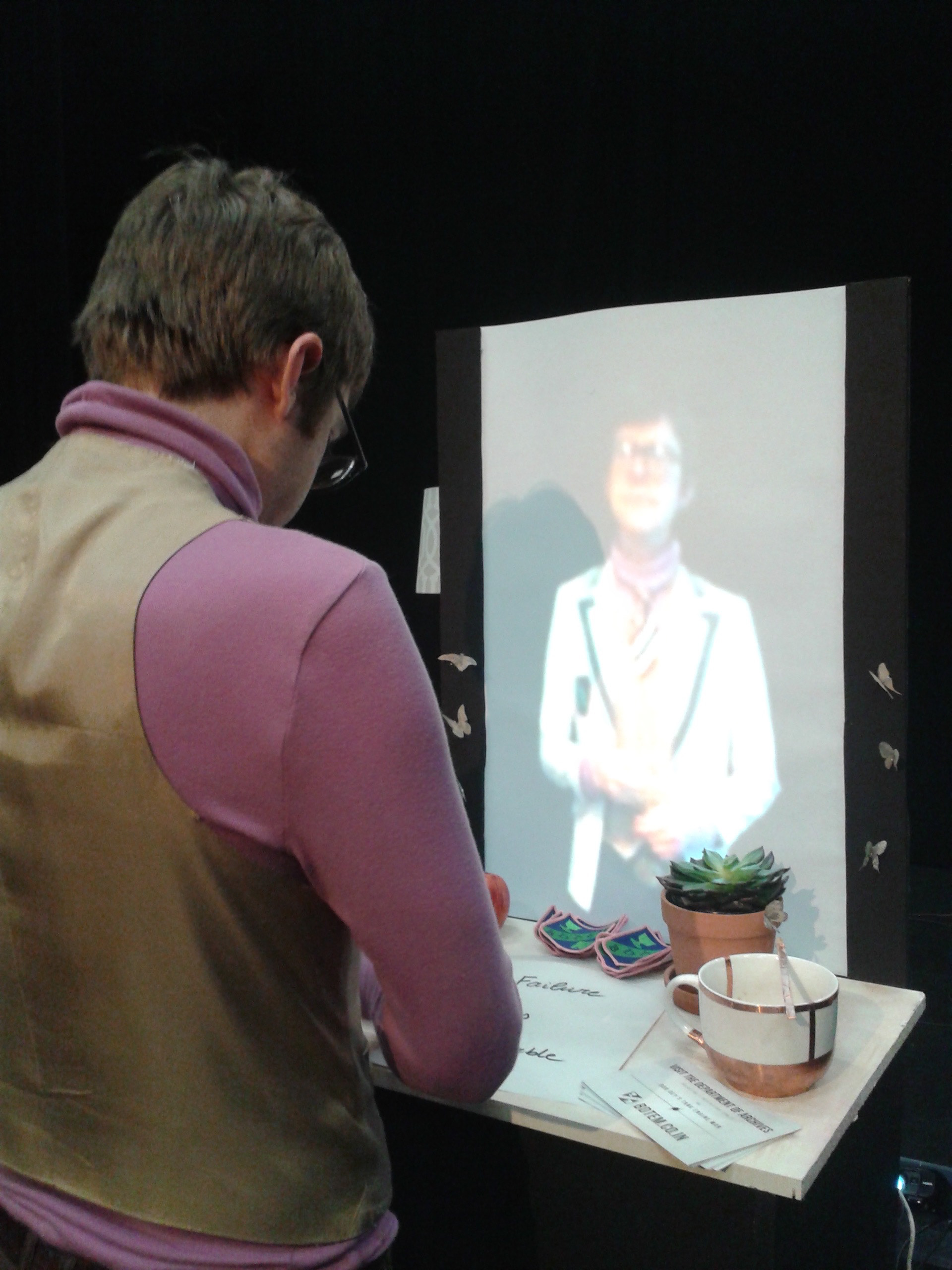
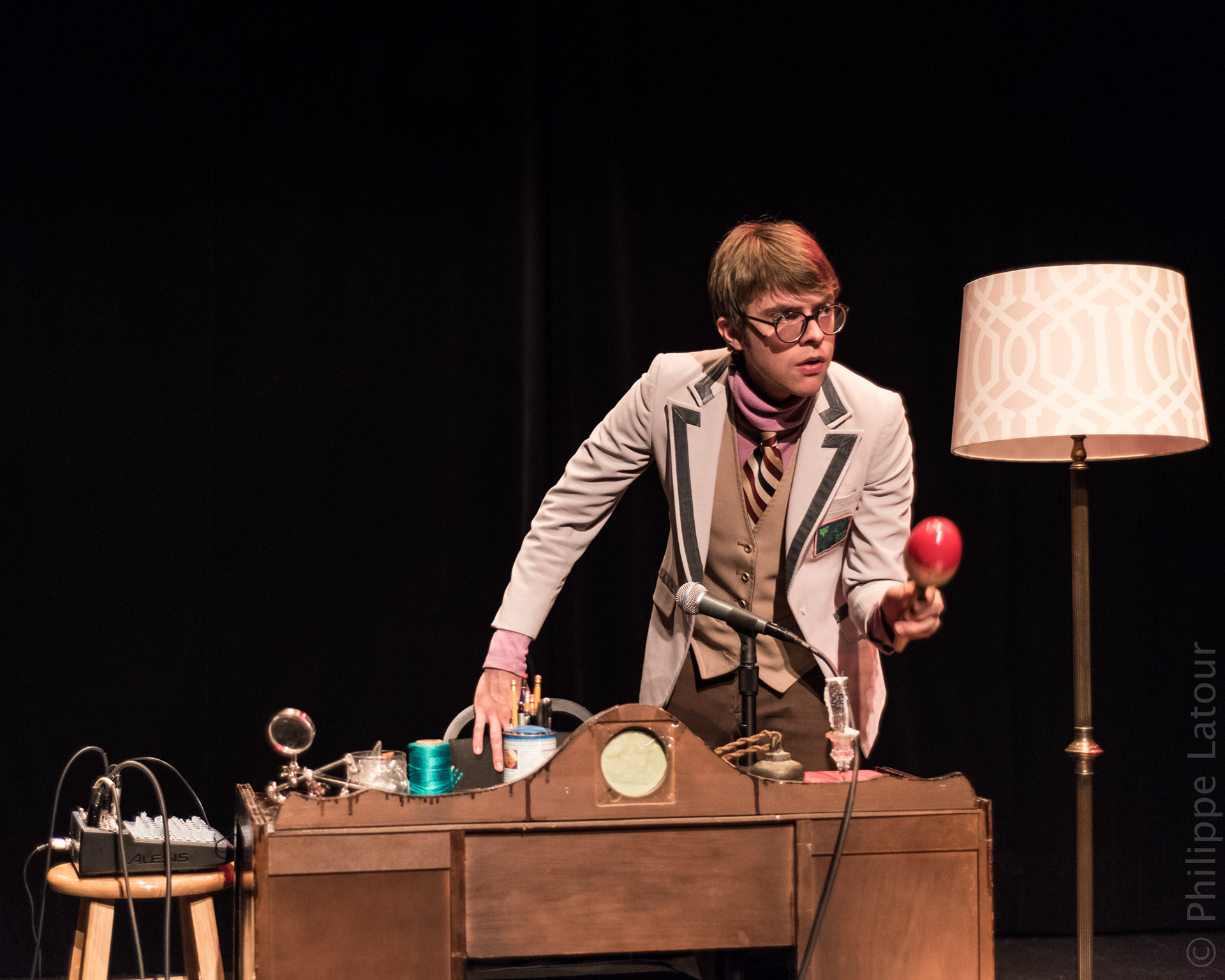

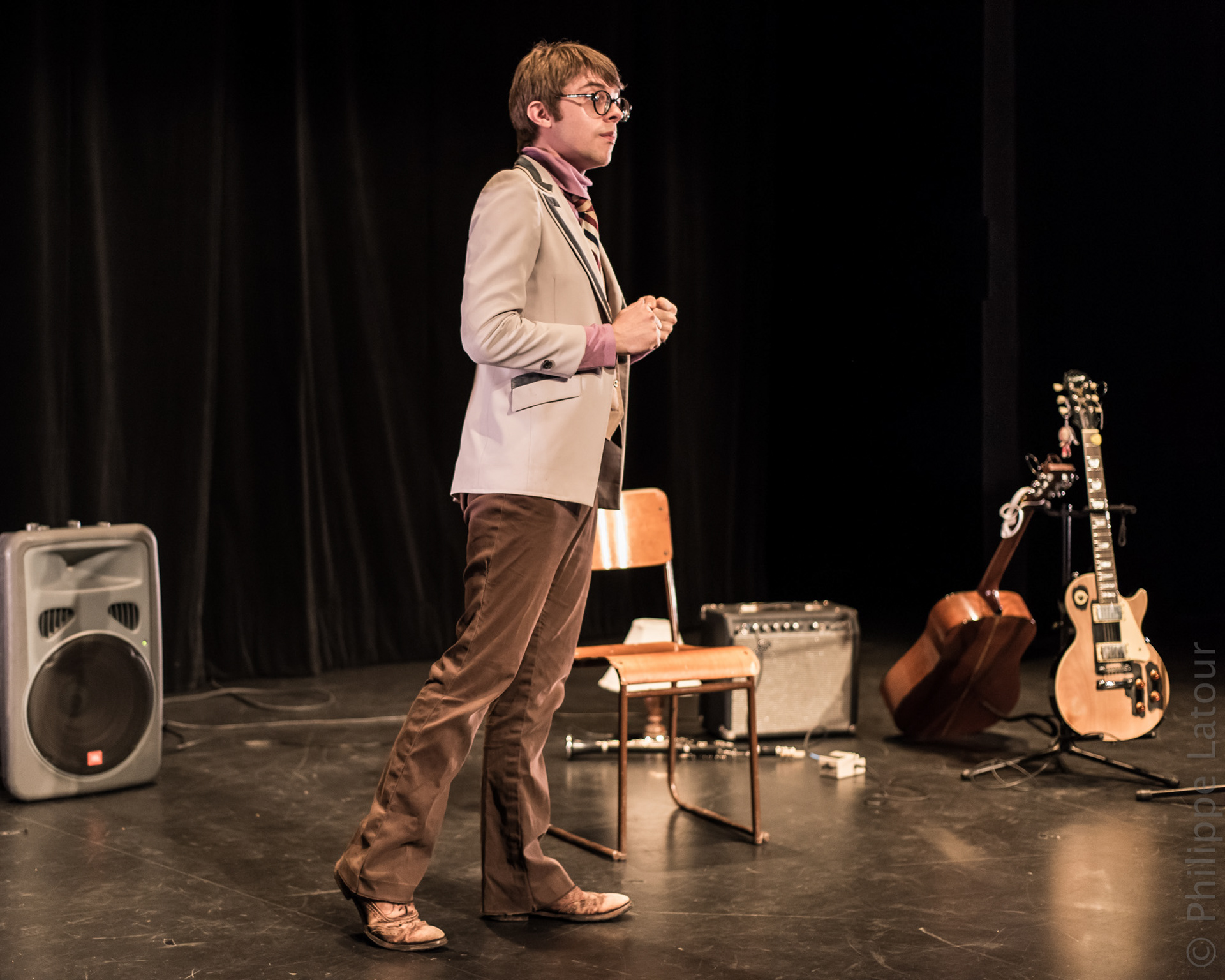
The first play was called Analysis of Failure and supposed itself to be a seminar run by Mark Jumper in which he attempts to guide audiences toward acceptance of their own shortfalls by using the BDTEM failure as a case study. During the seminar, he ruthlessly dissects the BDTEM Project, playing and analyzing songs to try to explain the cause of its failure. But the more he analyzes the work, the more frustrated he becomes with having failed in the first place, ultimately leading to a small meltdown and finally a moment of hopeful realization.
I am very keen on making a complete experience out of a performance. So another interesting aspect of the show was an interactive audio/video installation built by a friend and collaborator, Tina Salameh. As the audience filtered into the theatre before the show, they were greeted by a small video screen which showed a looping video of Mark Jumper standing uncomfortably and inviting them to touch objects on a mockup of his desk. By touching the objects, they would trigger audio samples and loops, some music and others scraps of speech, which related to the play. The installation added an exciting layer of context to an otherwise strange and unexpected story.
I also won the Spirit of the Fringe award when the power went out in my venue and I performed the play in the park across the street.
Jumper's Wonderful Museum

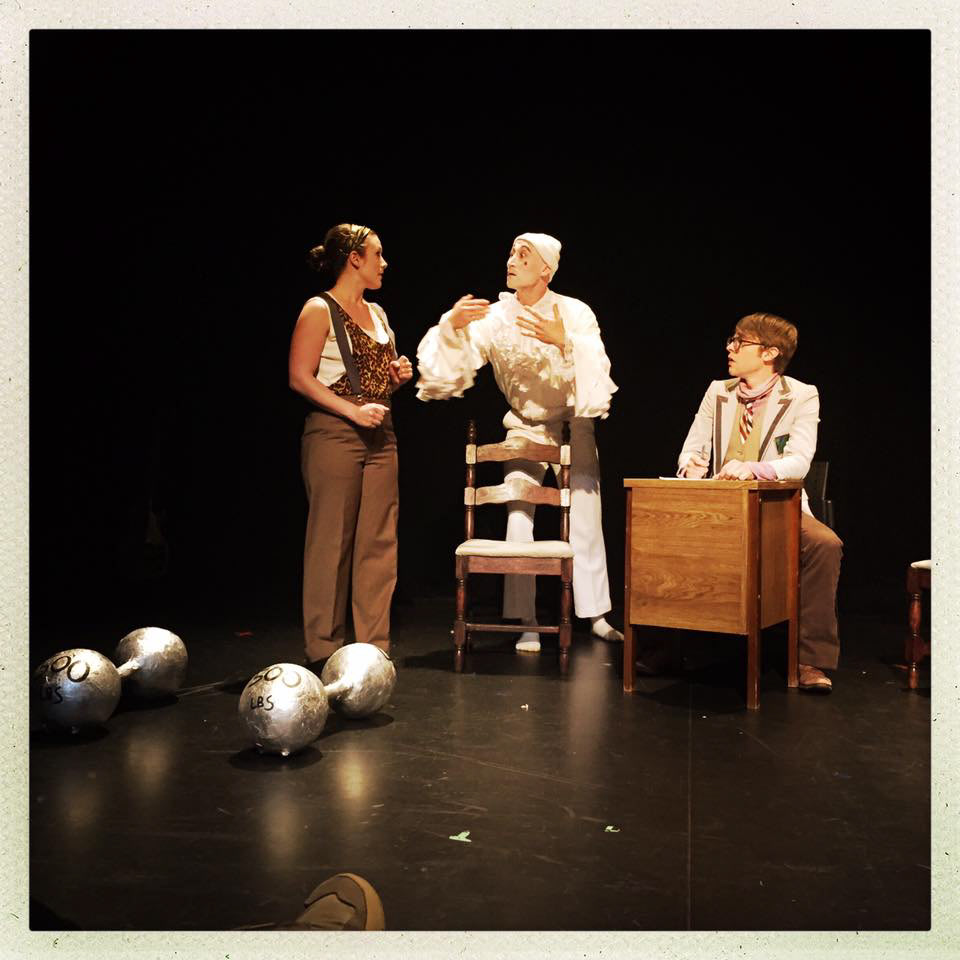
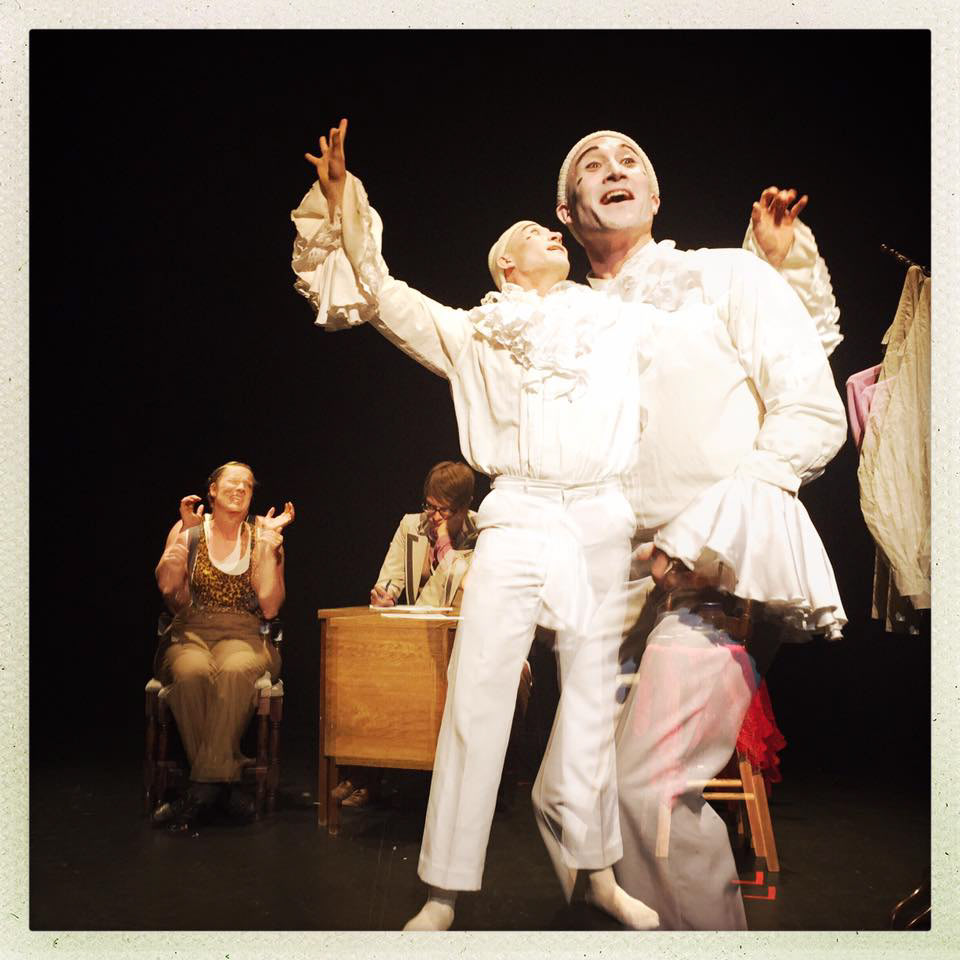
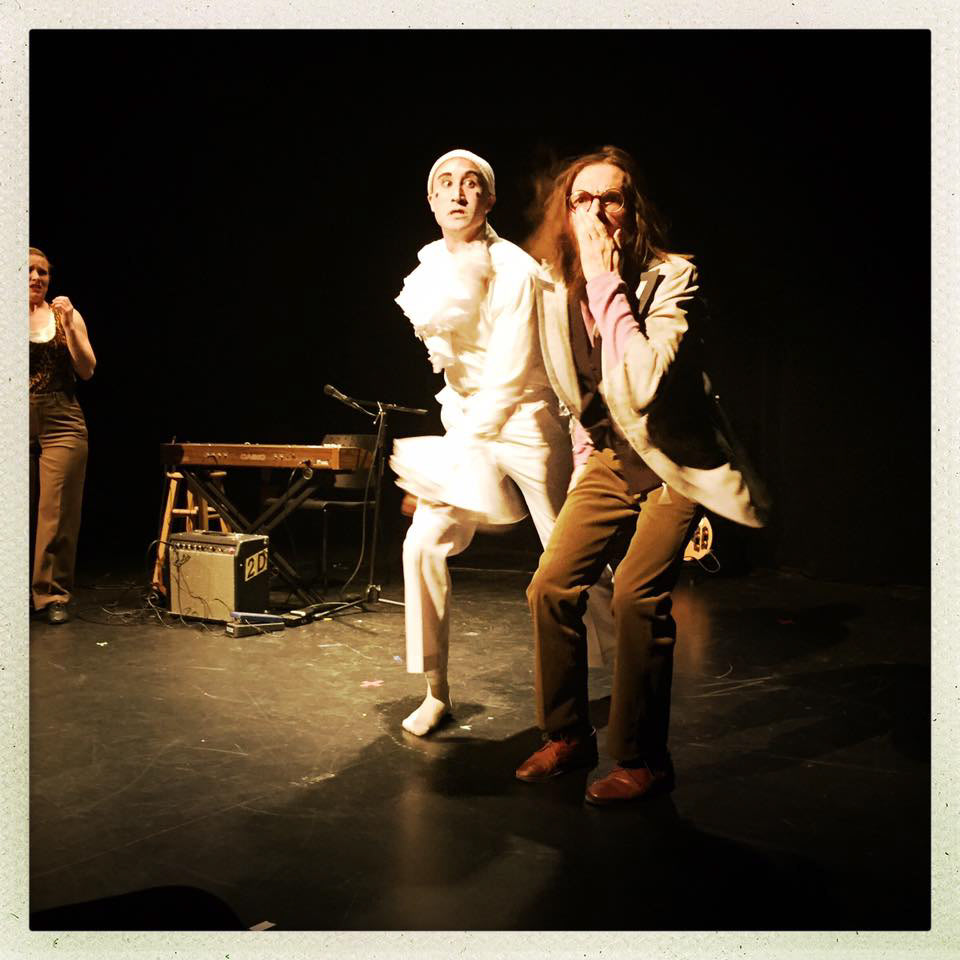
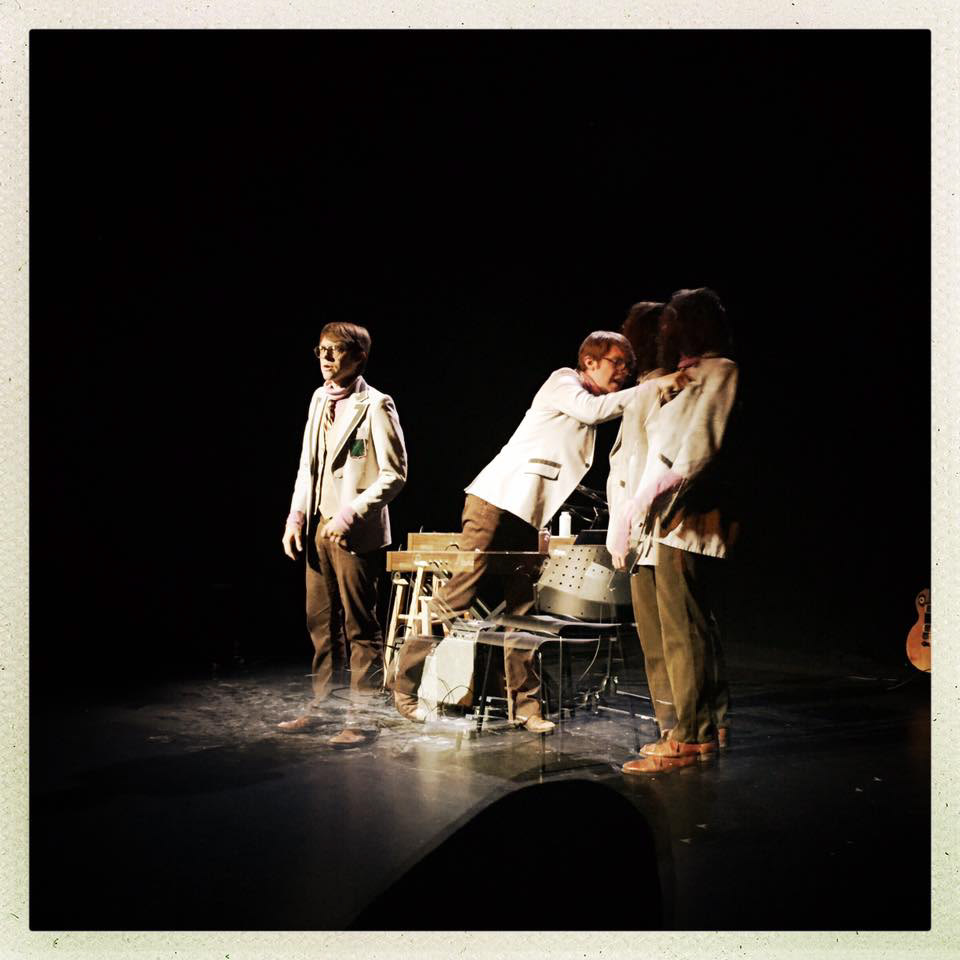
The second Fringe Festival play was called Jumper’s Wonderful Museum. It features a cast of four, including myself, and is set sometime long after the Analysis of Failure but before Mark Jumper started making the BDTEM Archive. This time, we find Jumper traveling with a circus and sharing quarters with the Strong Lady and the Mime. He spends his time preparing presentations in which he attempts to convince the Circus Manager to let him perform in the circus. But every time he begins a presentation, he is derailed by the physical embodiment of his insecurities, who creeps in from some hidden corner of the theatre to berate Jumper, chide him, and shoo him off stage. When Jumper finally lets his alter ego take full control, he alienates the Strong Lady and Mime for which he suffers heavy consequences.
The staging of the show was much more intricate this time around, with narrative audio interludes introducing new scenes; handmade instruments (including the Sonic Lantern and the Singing Mirror) built to reveal the ironic metaphor of Jumper’s pleas to the Circus Manager; a lightning storm; and a scene featuring the Mime taking a silent adventure through the woods that I supported with sound design triggered on a MIDI keyboard.
In the end, it was nominated for three awards, including Best English Production and the Mainline Creativity Award. Not bad.
Analysis of Failure _ Reconstructed
During one of the Analysis of Failure Fringe performances, a friend of mine put a handheld recorder at the corner of the stage and captured audio of the whole show. To my mind, sitting and listening to the raw audio would be boring to anyone but me. So I took samples of the monologue, music, and various scuffs scrapes thunks to turn into a weird album version of the play. I called it Analysis of Failure_Reconstructed and released it on a website.
Live Performance
To launch the website, I wanted to have a performance that embodied the new direction the BDTEM Project was taking. Something that was abstract and weird and mixed technology with imagery and sound. Something that involved audience participation and a certain amount of controlled randomness. To achieve this, I enlisted the help of projection artist, Chris Tyler, and musician, O E Lewis, among several others who were involved in varying degrees.
We rented a space which we transformed into the Dept. of Archives for the night. We set up pockets of lighting; a literal stack of semi-functioning TVs, each playing short loops of Mark Jumper performing small tasks; something called a Utility Mic into which audience members could read pre-written text for inclusion in the Archive (in fact their voices joined the swirling, ambient, surround soundscapes provided live by O E Lewis as pre-show mood-setting); and a MIDI keyboard loaded with samples from Analysis of Failure that the audience members could play around with as they waited for the show to begin.
The main event was a musical performance in which I improvised a live version of the Analysis of Failure_Reconstructed album on Ableton while Chris Tyler produced live projections that supported and responded to the music.
For the penultimate number, we attempted an experiment in which we asked the audience to use their phones to visit this page on the BDTEM site and tap the screen at will. The page is designed to randomly play notes from an F#maj7 chord, so all the phones together created an undulating drone over which I sang one of my songs.
Interactive Website
This is the first iteration of what eventually evolved into the BDTEM Archive and thus had similar goals regarding narrative exploration, subversion of expectation, and hidden content.
The site consists of two main pages:
1. The first page houses a more traditional, linear version of the Analysis of Failure_Reconstructed album, with a playlist and some interactive liner notes.
2. The second page is found by discovering a secret link in the “o” of the “AoF” in the page’s title. When users arrive here, they are confronted with a randomly populated web of interconnected nodes containing audio samples (all the samples used in making the album), any of which they can click to begin playing audio. When one of the nodes is triggered, it sends a message to any other node it has a connection with to start playing audio after a certain delay. In this way, the user need only click once to hear the whole web of nodes play itself out. The user can define the number of nodes present as well as adjust the branching probability of the web as the nodes populate. The intention was to make a randomized album that, although made of familiar sounds, could never really be listed to the same way twice.
The heavy lifting in terms of coding was done by my friend and collaborator Antoine Beau-Lacasse (who is a dev-wizard extraordinaire, by the way).
And a quiet exit
From here, it's an easy leap back to the BDTEM Archive, where we started this whole journey, so I will spare you any further skimming or perusing and simply say: ssssooooo lllllooooonnnnnggggg!!!!

